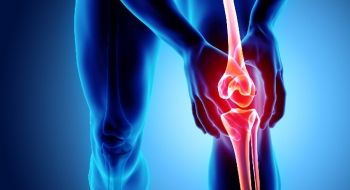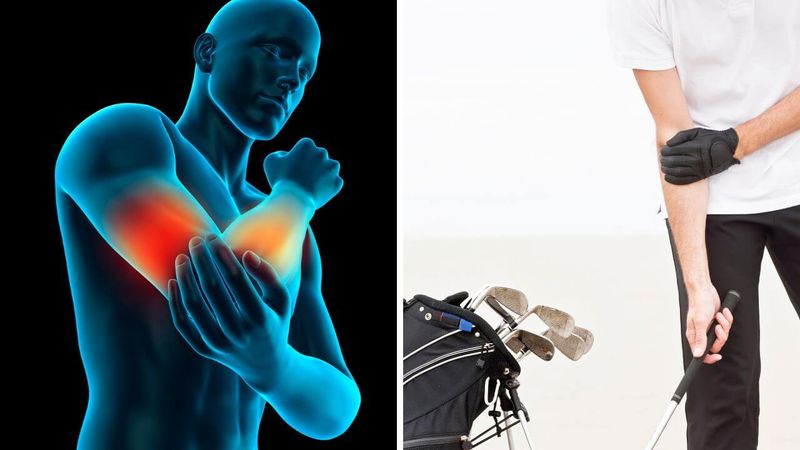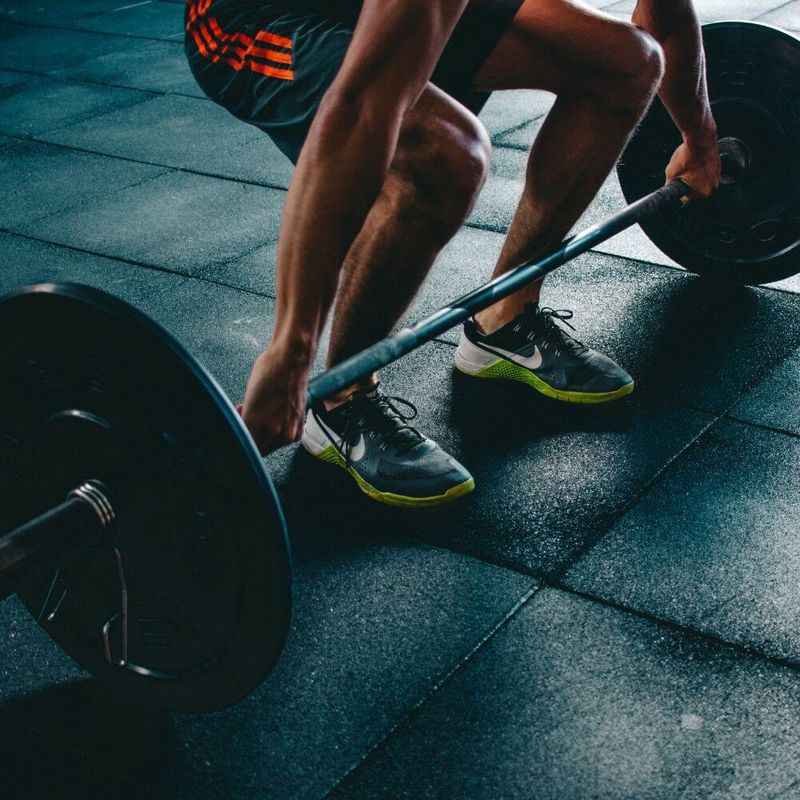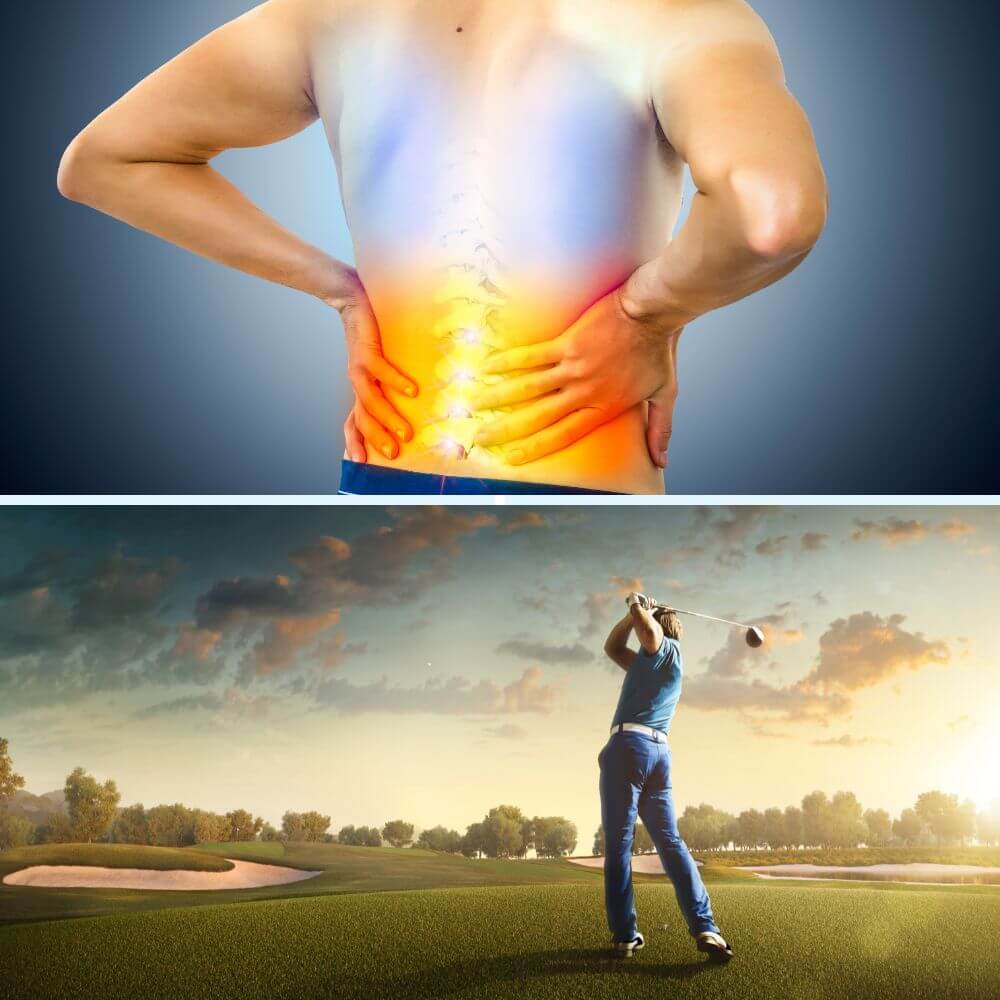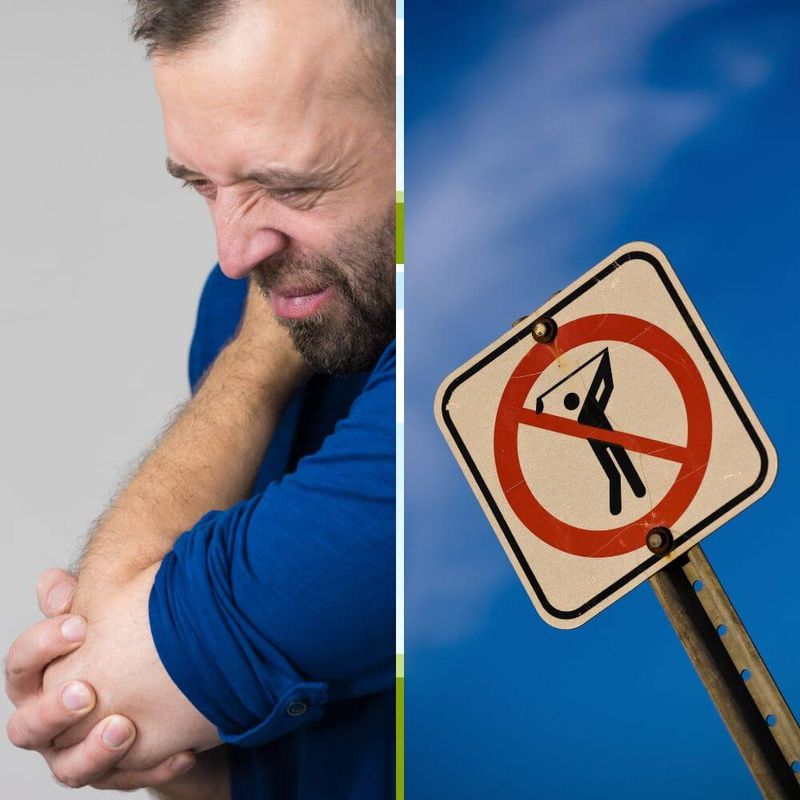Content Summary
Tennis elbow or golfers elbow giving you grief? We know it's uncomfortable. We'll guide you through stretches to help reduce the pain. Ready to get started? Let's go!
Introduction to Golfers Elbow
Golfer's Elbow, or medial epicondylitis, is a pain caused by inflamed tendons on the inside of your elbow. It often affects those who do repetitive motions with their hands, such as throwing, playing golf or racquetball, or lifting. People who use tools and keyboards can also get it.
You may feel sharp pains or dull aches when gripping things or twisting your arm. If the injury is bad, the discomfort may reach your wrist and arm.
Home remedies, like rest, ice to reduce swelling and stretching, can usually help Golfer's Elbow. In more serious cases, physical therapy or injections may be needed to ease symptoms and restore strength back into your arm muscles.
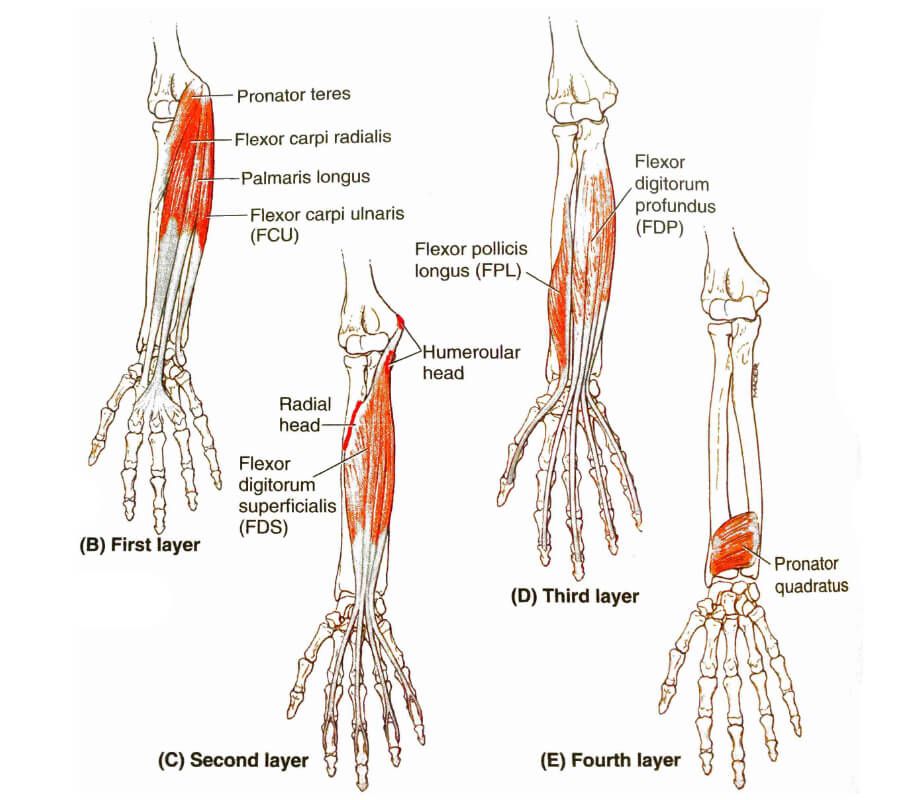
Causes of Golfers Elbow
It occurs due to the repetitive wrist extensions and flexions while swinging a golf club.
It can also be caused by activities needing repeated wrist movements, such as tennis, baseball pitching, and carpentry. With time, this microtrauma causes pain and inflammation of the tendons connecting to the elbow joint.
Increased Factors for Golfers Elbow
The exact cause is unknown, however, certain factors can increase the risk of this injury. These include:
- playing golf with bad technique;
- having incorrect posture;
- weak muscles or grip strength;
- uneven forearm muscles due to over- or under-use;
- sports with strong pulling motions like karate and rock climbing;
- trauma to the elbow joint, such as a fall; and
- aging as tendons become more fragile with age.
Symptoms of Golfers Elbow
Symptoms include:
- Pain in the inner side of your elbow
- Swelling
- Stiffness
- Weakness in your forearm muscles
- Tenderness when you press around the bony bump on the inside of your elbow
- Difficulty straightening your arm completely
If not treated properly, this pain can become very severe.
The most common cause of golfers elbow is repetitive movements, like gripping and flexing your wrist and elbow. This overworks the muscles, putting stress on the tendons, leading to tears or irritation near the base of your inner forearm near the bony bump on your elbow.
Certain sports like golf, tennis, and throwing activities require forceful contractions that can also cause golfers elbow. Incorrect technique adds more stress to these muscles, leading to further irritation and pain in the inner elbow area.
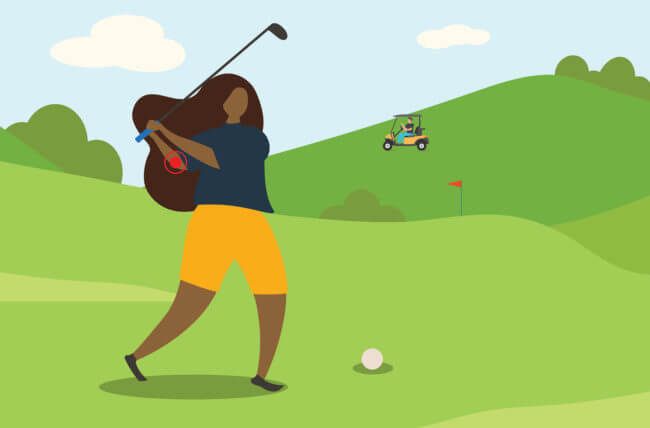
Diagnosis of Golfers Elbow
Your doctor will ask about any recent sports activities or other activities that could have caused the strain. They'll also do a physical exam, by pushing on your elbow and hand to evaluate tenderness.
Imaging tests, like an MRI or X-ray, might be used if there's concern over structural damage. After all the info is taken into account, a treatment plan can be made specifically for you.
Treatment for Golfers Elbow
Treatments for Golfer's Elbow include:
- rest
- physical therapy
- orthopedic bracing
- surgery
Rest
Is very important for treating Golfer's Elbow. This rest will let inflammation and tissue harm heal. Avoid any activity that causes pain in the elbow. Once healed, muscles can be made stronger with different exercises that don't strain the joint.
Physical therapy
Can help with weak areas around the elbow joint. It can improve tight muscles' flexibility, and overall stability of the arm. Therapists typically use ultrasound with stretching and light resistance exercises during this stage of treatment.
Stabilization braces
Help reduce stress on the tendon attachments by bringing extra support around the joint. A good brace will improve compression near the lateral epicondyle, while permitting full range of motion during activities.
For more severe cases, surgery may be necessary. During the procedure, an incision is made near the medial epicondyle. Damaged tissue is repaired, and scar tissue due to inflammation is removed. For treatment of Golfer's Elbow, it may be necessary to visit an orthopedist specializing in sports injuries.
Stretches for Golfers Elbow
To prevent or relieve golfer's elbow pain, it is important to strengthen the muscles surrounding your elbow. Stretching exercises can help too. They improve flexibility, mobility, and range of motion. Here are some commonly recommended stretches:
- Forearm Pronation/Supination Stretch: Stand with a dumbbell in one hand and your palm facing you (pronation). Rotate your palm so it faces forward (supination). Reverse back again. Repeat 10 times for each arm.
- Wall Biceps Stretch: Press your right palm into a wall. Slowly turn away from the wall. Hold for up to 30 seconds. Repeat on the left side.
- Wrist Extension Stretch: Extend one arm out in front at shoulder height. Palm should be facing down. Fingers should point away from you (neutral hand position). Bend your extended fingers back with your other hand (wrist extension stretch). Hold for 15 seconds. Repeat 3 times for each arm.
Forearm Extensor Stretch Slide
Place your affected elbow down at your side, bent at about 90 degrees. Then make a fist with your palm facing down. Keeping your wrist bent, slowly straighten your elbow so your arm is down at your side. Hold for at least 15 to 30 seconds. Repeat 2 to 4 times.
Remember to take breaks from activities that cause golfer's elbow pain and stretch during those breaks. This will help avoid overusing the muscles. If you have chronic pain, see a professional physical therapist. They can prescribe motion-informed relief therapy techniques.
Prevention of Golfers Elbow
Stretching is key to safeguarding your body from the risk of Golfer's Elbow. There are various stretches that can reduce the odds of getting it.
Perform these exercises regularly to help prevent Golfer's Elbow. Also, check your form when doing physical activities involving arms. This can further reduce the risk of pain near the elbow joints.
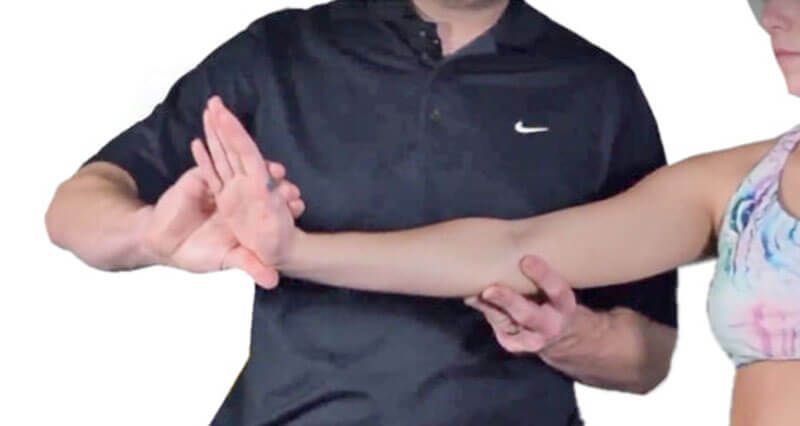
Good stretches for golfer's elbow include:
Internal/external rotation squeeze
Internal and external rotation squeeze exercises involve squeezing an object, such as a tennis ball, between the thumb and fingers. This exercise strengthens the muscles that control the forearm rotation of the wrist joint. It is especially beneficial for golfers who are prone to elbow injuries due to overuse or improper technique.
This exercise can be performed several times throughout each day to help build strength in this area of the body which can help prevent injuries associated with golfers elbow such as tendonitis or strains caused by repetitive use of certain motions.
Finger Curling
This exercise strengthens the muscles and tendons of the forearm, which can help alleviate pain caused by golfer’s elbow. To perform this exercise, hold your arm out straight with your palm facing up. Bend each finger at a time until it is slightly bent in towards your palm then release. Repeat this motion for all five fingers 10 times before repeating on the other hand.
Make sure you keep your wrist and arm still throughout this movement. Over time, you can progress to curling each finger for ten seconds or more at a time as well as performing multiple sets of 10 reps per hand. Finger curling should be done several times per day to start seeing results from the exercise and give yourself relief from golfers elbow pain.
Wrist flexion/extension
Wrist flexion and extension exercises are key for treating Golfer’s Elbow. These exercises help strengthen the muscles in your forearm, reducing tension and pain caused by overuse.
Wrist flexion is when you bend your wrist towards you (wrist extension slide), while wrist extension occurs when you straighten it away from you.
To perform a simple wrist flexor stretch exercise, start with your arm extended straight out in front of you. Slowly bend your wrist upward toward the ceiling as far as possible without causing any pain or discomfort.
Hold this position for 5-10 seconds before slowly returning to the starting position. Repeat this stretch 10-15 times for 3 sets per day to see results.
For a wrist extension exercise (wrist extensor stretch slide), start with your arm bent at 90 degrees with the elbow rested against a wall or surface and pointing forward.
Then lightly press into the wall/surface and hold for 5-10 seconds before relaxing back down into starting position. Repeat this 10-15 times for 3 sets per day to work on regaining strength in the forearm muscles that support elbow movement and stability during everyday tasks like golfing or lifting weights.
Figure-eights
The exercise involves making circles with your affected arm at least 8 inches in diameter, and repeating them in a figure-eight pattern.
This helps stretch and strengthen the muscles of the forearm, as well as increase blood flow to the area. It's important to start slowly, going from larger circles that gradually become smaller until you can make full figure-eights with ease.
As you get more comfortable with the movement, you can add resistance by using TheraBand or weights to increase intensity while still maintaining proper form. Additionally, ensure that your elbow remains straight throughout each repetition and that you're focusing on engaging both sides of your forearm equally.
Tennis ball squeeze
It involves squeezing a tennis ball in your hand and holding the tension for several seconds, then releasing it.
Doing this exercise regularly can increase strength in the forearm muscles and reduce tension on the tendons of the elbow joint. This can help reduce inflammation and discomfort associated with golfer's elbow.
The key to successful tennis ball squeezing is to focus on keeping your arm straight while anchoring your shoulder down into its socket. You should start off with light pressure, gradually increasing it as you become comfortable with the motion.
Bent-arm triceps stretch
The bent-arm triceps stretch is a great way to help alleviate elbow pain caused by golfer's elbow. To do this stretch, stand with your feet shoulder width apart and your arms at your sides.
Bend one arm and grab the top of it with your opposite hand. Gently pull the bent arm across your body until you feel a comfortable stretch in the back of the elbow and upper arm. Hold this position for 20–30 seconds before repeating it on the other side.
To help prevent further injury and mitigate existing pain associated with golfer's elbow do this exercise on a daily basis.
Brachialis stretch
The brachialis is a muscle located in the upper arm just below the biceps. It runs from the lower half of the humerus (upper arm bone) and inserts into the ulna (a forearm bone).
To perform a brachialis stretch, first start by standing with your feet shoulder-width apart. Reach both arms out to your sides at shoulder height with elbows bent and palms facing down.
Slowly turn your palms up while keeping your elbows bent until you feel tension in your forearms or upper arms. Hold this position for 30 seconds and then release slowly.
You can repeat this stretch 2-3 times before finishing with a gentle massage over the area that was stretched to help relieve any tightness or pain that may have resulted from stretching it out.
Summary of Golfers Elbow
Golfer's Elbow, also known as medial epicondylitis, is a type of tendonitis that affects the tendons connecting your elbow to your arm and hand muscles. It's often seen in golfers because of the force they use while swinging their club. Symptoms include pain in the inner elbow, weak grip strength, and tenderness when moving the wrist or forearm.
Treating golfer's elbow may involve rest, cold therapy, stretching exercises, reinforcements (like braces or taping), medication to reduce pain and inflammation, and in more severe cases corticosteroid injections.
Stretching and eating properly is key before engaging in any activity that requires using those same muscles, like golf.
Thank you for visiting, and we hope to see you back soon!
